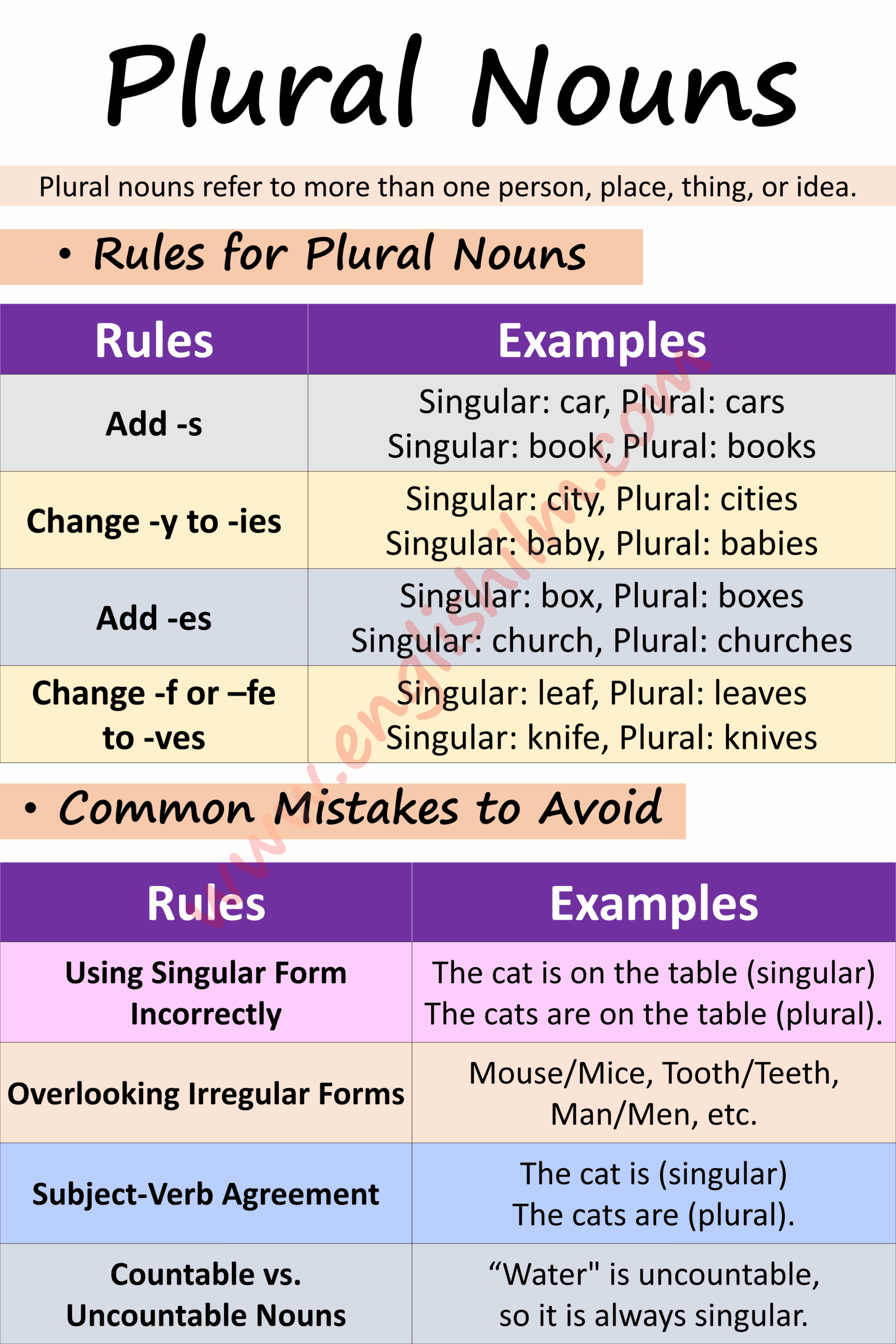Nouns are an essential part of language, serving as the building blocks for communication. In English, nouns can be singular or plural, depending on whether they refer to one or more than one person, place, thing, or idea. Pluralizing nouns is a basic concept in grammar, but it can sometimes be tricky to know the rules for making a noun plural. There are several common ways that nouns are pluralized in English, and understanding these rules can help improve your writing and speaking skills.
When it comes to pluralizing nouns, there are some general guidelines that can help you determine the correct way to make a noun plural. In most cases, adding an -s to the end of a noun will make it plural. For example, “cat” becomes “cats” and “book” becomes “books.” However, there are some exceptions to this rule, and it’s important to be aware of these irregular plural forms.
How Nouns are Usually Pluralized
In addition to simply adding an -s to the end of a noun, there are several other common ways that nouns are pluralized in English. One common rule is to add -es to nouns that end in -s, -x, -z, -ch, or -sh. For example, “bus” becomes “buses” and “box” becomes “boxes.” Another rule is to change the ending of a noun, such as changing -f to -ves, as in “leaf” becoming “leaves.” Some nouns have irregular plural forms that do not follow any specific rules, such as “child” becoming “children” and “person” becoming “people.”
It’s also important to pay attention to the spelling of a noun when pluralizing it. Some nouns require a change in spelling when made plural, such as dropping a silent e before adding -s, as in “mouse” becoming “mice.” Other nouns may require a change in the internal vowels or consonants, such as “man” becoming “men” and “foot” becoming “feet.”
Understanding how nouns are pluralized is an important aspect of mastering the English language. By knowing the common rules for pluralizing nouns and being aware of irregular plural forms, you can improve your writing and speaking skills and communicate more effectively. Practice using different plural forms of nouns in your everyday language to become more comfortable with these rules and enhance your fluency.
In conclusion, pluralizing nouns is a fundamental aspect of grammar that can sometimes be challenging. By familiarizing yourself with the common rules for pluralizing nouns and practicing using different plural forms, you can enhance your language skills and become a more effective communicator. Remember to pay attention to spelling and irregular plural forms to ensure that your writing and speaking are clear and accurate.
